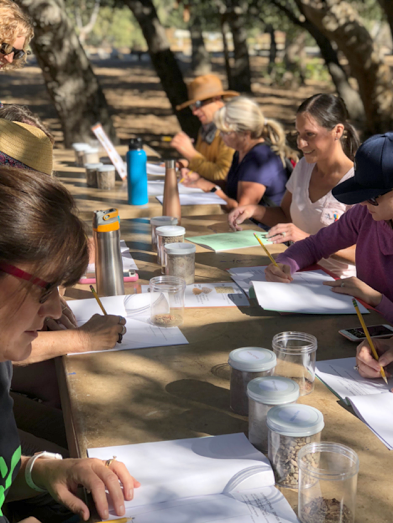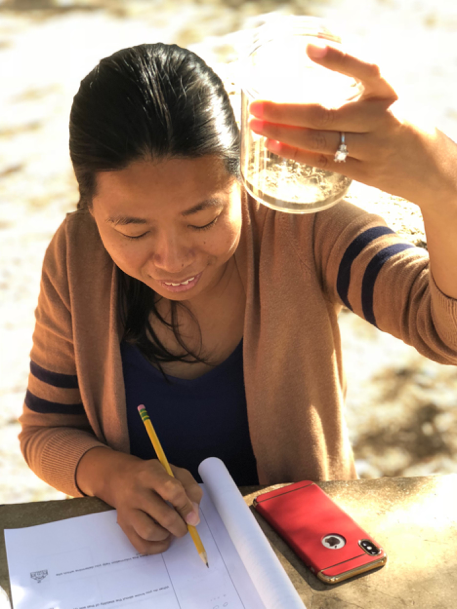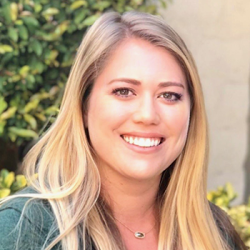
On Monday my boss was called to a meeting at an emergency operation center at the top of a steep hill in Santiago Canyon, in southern California. She had to meet with chief emergency planners from the county, because just over a month after the “Holy Fire” that burned 23,136 acres of the Cleveland National Forest, the rains were coming, and her school is in the flood zone. The PBL unit we had been planning for so long was coming to life!
Thanks to a generous grant from BOSCH, we had been collaborating with the Orange County Department of Education’s (OCDE) STEM team for two years in order to develop a STEM project for all fourth graders in our district. My boss is Lisa Paisley, the K-6 STEM Coordinator in Saddleback Valley Unified School District (SVUSD), and also the principal of Trabuco Elementary School, home of our Field Study Program down in the canyon.
Teachers Do the Project First
 When the unit finally kicked off this September, all fourth-grade teachers joined their instructional coaches at a teacher-facing project launch event, called the EcoSTEM Immersion. Teachers engaged in watching a video of the phenomenon, which showed large mass debris movement and flooding during a heavy rainstorm in 2010 over the bridge we took to get to Santiago Canyon that morning. They were introduced to their design challenge: “A new builder would like to build a home near Trabuco Elementary School and they need your help. They have identified three potential sites for the new home… Your company has been entrusted to protect the school, O’Neill Park, and the open space in this area. You have a deep responsibility and commitment to preserve the environment and the history of south Orange County. Your challenge is to gather information to allow you to make an evidence-based recommendation to a builder about where they should build.”
When the unit finally kicked off this September, all fourth-grade teachers joined their instructional coaches at a teacher-facing project launch event, called the EcoSTEM Immersion. Teachers engaged in watching a video of the phenomenon, which showed large mass debris movement and flooding during a heavy rainstorm in 2010 over the bridge we took to get to Santiago Canyon that morning. They were introduced to their design challenge: “A new builder would like to build a home near Trabuco Elementary School and they need your help. They have identified three potential sites for the new home… Your company has been entrusted to protect the school, O’Neill Park, and the open space in this area. You have a deep responsibility and commitment to preserve the environment and the history of south Orange County. Your challenge is to gather information to allow you to make an evidence-based recommendation to a builder about where they should build.”
Teachers then rotated through three stations to gather data to formulate a claim: 1) stream tables to test the effects of slope, vegetation, and flow rate on soil movement, 2) soil coring and plant analysis, and 3) fossil pits mirroring the three house site locations. These rotations were led by the OCDE team, Trabuco Field Study teachers, and SVUSD instructional coaches, in a way that demonstrated the shifts of the Next Generation Science Standards. We purposefully brought teachers out to do field work before launching the project with students, so we could model how to encourage inquiry, engage in discussions around open-ended questions, and consider multiple sources and investigations.
What Students Will Do at Different Schools
Fourth graders at all of the schools in our district have field trips planned during different times of the year to go visit the Trabuco Field Study Program and kickoff the unit down in the canyon. When students get back to their classrooms after experiencing the phenomenon and rotations with the Field Study teachers, students will dive deeper into data analysis, strengths and weaknesses of plant root types, wind erosion, and flooding and water flow patterns. Students will consider the implications of each investigation and how it impacts their decision for which house site to build on.
The depth of this project and the final deliverables are left up to the creativity of students and the expectations of their teachers. Some teachers in SVUSD have decided to have students create a proposal and presentation to inform the homebuilder which site to build on, while others are developing collaborative Claims-Evidence-Reasoning paragraphs. At Santiago STEAM Magnet School, where instruction is delivered through Project Based Learning, students will be creating home site proposals as an intermediate deliverable. In the following learning segment, they will zoom out to apply their investigative knowledge to the United States as a whole. Students will decide which route to take as they journey to the west in the time of the Gold Rush, and create a map and journal showing their path. Their final deliverable will reflect the landscape encountered during their route and how it impacted their journey.
Improving Our Practice Through Professional Learning
 As time goes on, our EcoSTEM Immersion rotations keep getting better; time is adjusted, better questions are crafted, and management improves—the little tweaks we are consistently working on. There is so much more to be discovered in our reflections, though. As educators, we all know how imperative it is to engage children in hands-on, real-world learning. While we can use these education “buzz words” in blogs, professional development workshops, and staff meetings, it only becomes truly meaningful when we include teachers in the process. How do we move from demonstrating the shifts to teachers, to actually engaging them in the process of creating the units that encompass the shifts?
As time goes on, our EcoSTEM Immersion rotations keep getting better; time is adjusted, better questions are crafted, and management improves—the little tweaks we are consistently working on. There is so much more to be discovered in our reflections, though. As educators, we all know how imperative it is to engage children in hands-on, real-world learning. While we can use these education “buzz words” in blogs, professional development workshops, and staff meetings, it only becomes truly meaningful when we include teachers in the process. How do we move from demonstrating the shifts to teachers, to actually engaging them in the process of creating the units that encompass the shifts?
It is up to each of us, in all capacities as educators, to be involved in continued professional learning for meaningful growth in our practices. We have to continue to come together as partners to collaborate, reflect, and push each other further in our teaching. Teachers deserve a system that gives them the support necessary to create units like the one we developed with OCDE’s STEM team. They need time, experience, and resources to engage their students in learning their grade level standards through their project, in a way that is relevant and exciting. With instructional coach support and continued professional development, we can all teach in a way that encourages student inquiry, discourse, research, and application.
Want to learn more about PBL? Check out our books.
Register now for PBL World 2019.

